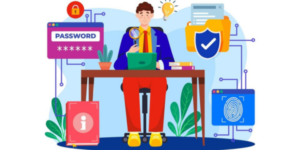27 Jul
In the world of digital technology, we frequently overlook the significance of routine software updates due to our hectic schedules. However, this seemingly insignificant task is essential to preserving a hassle-free, effective, and safe digital experience. We’ll explore the importance of maintaining software updates in this post, avoiding technical jargon and marketing speak.
Fundamentals: What Do Software Updates Mean?
Let’s debunk the term’s myths before discussing its significance. Updates for software are essentially modifications or additions made by developers to fix bugs, improve features, and—most importantly—the security flaws. Any digital tool we use on a daily basis, including operating systems, apps, and antivirus software, may be affected by these updates.

**1. Strengthening Security: Protecting Your Digital Stronghold
Think of outdated software as a breach in the walls of your digital fortress. Software security flaws are similar to open invitations for online criminals. Frequent updates fill in these holes and strengthen your digital defences. They are the reinforcements you need.

**2. Defence Against Malware and Exploits
Cybercriminals are constantly searching the vast expanse of the internet for weaknesses to take advantage of. They can easily propagate malware, ransomware, and other dangerous components on outdated software. Frequent updates strengthen your digital environment and build barriers against potential threats, acting as a virtual antivirus.

**3. Data Integrity: Protecting Your Electronic Files
Our data is like precious assets in the digital age. Data integrity is crucial for all types of files, including financial records, work-related files, and personal documents. Updates for your software not only fix bugs but also help keep your digital ecosystem stable, protecting the integrity and safety of your priceless data.

**4. Enhanced Performance: Unlocking Efficiency
Your digital experience may be hindered by outdated software. Updates frequently bring bug fixes, streamlined procedures, and performance improvements, making operations run more smoothly and effectively. Your computer’s engine continues to run smoothly with regular software updates, just like a well-maintained car does.

**5. Compatibility Harmony: Ensuring Seamless Functionality
As technology evolves, so do software and hardware requirements. Regular updates ensure that your software remains compatible with the latest devices and systems. This compatibility harmony is crucial for a seamless user experience, preventing glitches or incompatibility issues that can arise from using outdated software on modern platforms.

**6. Feature Enrichment: Embracing the New and Improved
Updates aren’t just about fixing what’s broken; they’re about introducing new and improved features. From user interface enhancements to additional functionalities, software updates bring a breath of fresh air to your digital tools, keeping them relevant and offering you a more satisfying user experience.

**7. Security at a Low Cost: The Value of Prevention
In the context of cybersecurity, preventing an attack is frequently more economical than responding to its aftermath. Consistent software updates lower the chance of security breaches, which may result in expensive data recovery, legal repercussions, or harm to your reputation in the workplace.

**8. User-Friendly Interface: No Hot Spot
Imagine making frequent mistakes while utilising antiquated software with a clumsy interface. It’s annoying, isn’t it? Frequent updates minimise bugs and guarantee that your digital tools operate flawlessly, all of which contribute to a user-friendly experience. This is particularly important for people who use technology for their job, education, or leisure.

**9. Sustainability in the Environment: Reduced Digital Waste
Outdated software can add to digital waste in this era of rapid technological advancement. Updates frequently include optimisations that reduce resource consumption in software, which eases the load on your device and helps create a digital ecosystem that is more environmentally friendly.

**10. Fostering a Community: A Joint Duty
Maintaining software updates also helps foster a responsible digital culture. The whole online community gets safer as more people accept frequent updates. Making the internet a safe and reliable place for everyone is a shared duty.

In Conclusion: A Digital Duty We Cannot Ignore
In a world buzzing with technological innovations, the seemingly routine task of updating software emerges as a digital duty we cannot afford to ignore. It’s not just about fixing bugs or adding new features; it’s about safeguarding our digital fortresses, protecting our valuable data, and contributing to a more secure and efficient online world.
So, the next time that reminder pops up on your screen, urging you to update your software, consider it a call to fortify your digital stronghold, ensuring a safer, smoother, and more enjoyable digital journey. It’s a simple practice with profound implications for the security and sustainability of our interconnected digital lives.

